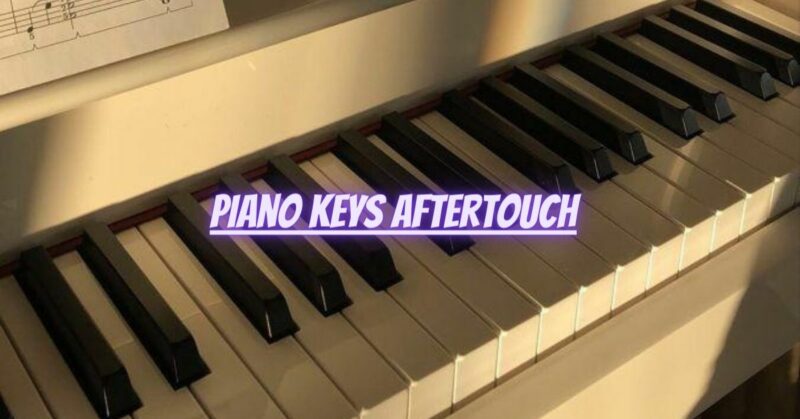Piano keys aftertouch is a sophisticated feature found in certain advanced digital keyboards and synthesizers. It adds a new dimension to the art of piano playing, allowing musicians to enhance their expressiveness and creativity. In this article, we will explore the significance of piano keys aftertouch, how it works, and how it enriches the playing experience.
1. Understanding Piano Keys Aftertouch:
Aftertouch, also known as pressure sensitivity, is a feature that detects the amount of pressure applied to the keys after they are initially pressed down. It allows musicians to modulate the sound, apply effects, or control other parameters by varying the pressure on the keys while holding them down.
2. Mechanism of Piano Keys Aftertouch:
Aftertouch is typically achieved through specialized sensors integrated into the keybed. When a key is pressed, the sensor registers the initial velocity as well as the changes in pressure applied afterward. This continuous measurement of pressure enables the player to create dynamic and evolving sounds.
3. Advantages of Piano Keys Aftertouch:
a. Expressive Playing: Aftertouch enables musicians to infuse their performance with a new level of expressiveness. By varying the pressure on the keys, they can introduce subtle or dramatic changes in volume, pitch, or timbre.
b. Dynamic Sound Shaping: Aftertouch empowers pianists to sculpt the sound in real-time, adding vibrato, pitch bends, or other effects without lifting their fingers off the keys.
c. Synthesizer Control: For digital keyboards and synthesizers, aftertouch can be mapped to control various parameters, such as filter cutoff, resonance, or modulation depth, providing an array of sound manipulation possibilities.
4. Applications in Modern Music:
Piano keys aftertouch is widely embraced in contemporary music styles, including electronic, jazz, and experimental genres. It allows musicians to push the boundaries of traditional piano playing and explore new realms of sound creation.
5. Developing Aftertouch Techniques:
To utilize aftertouch effectively, pianists need to develop finger control and sensitivity. Practicing various pressure variations and experimenting with different effects will help musicians become proficient in using aftertouch to its full potential.
6. Incorporating Aftertouch into Performances:
Whether it’s adding expressive nuances to a piano piece or creating unique soundscapes on a synthesizer, aftertouch can be a powerful tool in live performances and studio recordings. Musicians can seamlessly integrate aftertouch into their playing style and enhance their musical expression.
Conclusion:
Piano keys aftertouch is a groundbreaking feature that expands the possibilities of piano playing and sound shaping. It empowers musicians to transcend traditional boundaries and embark on a journey of sonic exploration and creative expression. Embrace the potential of aftertouch, and with every touch of the keys, let your music soar to new heights of emotion and innovation. Happy playing and discovering the boundless world of piano keys aftertouch!


